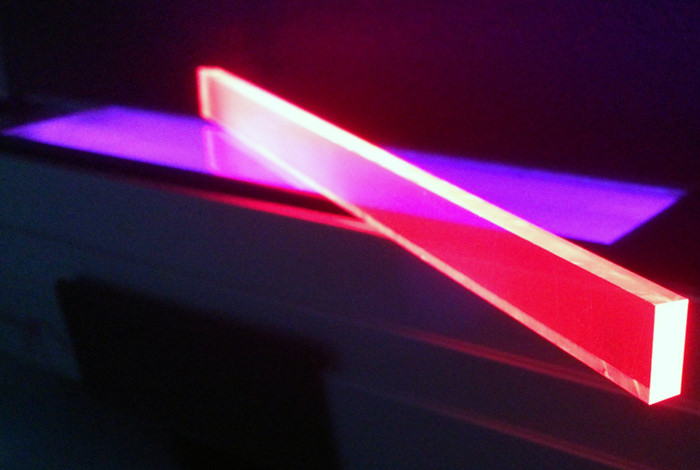At the point when searching for the best materials with which to build a sun based cell, the clear inclination would be for one that assimilates light, not discharges it. However specialists from Nanyang Technological University in Singapore have found a material that does both. Amongst a mixture of potential applications, the analysts say the material, Perovskite, opens up the likelihood of cell phones with shows that twofold as sunlight based cells.
Perovskite has as of now indicated guarantee as a daylight absorber, being utilized for this reason as a part of a model graphene-based photovoltaic gadget that accomplished a record productivity of 15.6 percent. The NTU group made the revelation that the material additionally transmits light just about coincidentally when NTU physicist Sum Tze Chien asked his postdoctoral specialist Xing Guichuan to sparkle a laser on the new half breed Perovskite sun powered cell material they were creating.
Since most sunlight based cell materials are great at engrossing light, the group was all around amazed to see the Perovskite sun oriented cell gleam brilliantly when the laser was shone on it.

“What we have found is that in light of the fact that it is an astounding material, and exceptionally sturdy under light introduction, it can catch light particles and believer them to power, or the other way around,” said Assistant Professor Sum. “By tuning the piece of the material, we can make it transmit an extensive variety of colors, which likewise makes it suitable as a light discharging gadget, for example, level screen shows.”
Since the Perovskite material might be made semi-translucent, the group says it could be utilized to make shows for cell phones that would additionally energize the gadget’s battery in daylight. On a bigger scale, it could be utilized as a part of tinted sun powered windows that produce power from daylight amid the day and get to be lighted presentations around evening time. The specialists say that the profoundly luminescent Perovskite material is likewise suited to making lasers.
“Such a flexible yet minimal effort material would be a help for green structures,” says Assistant Professor Nripan Mathews from the School of Materials Science and Engineering (MSE) and the Energy Research Institute . “Since we are as of now chipping away at the scaling up of these materials for expansive scale sun powered cells, it is really direct to adjust the methods to create light transmitting gadgets too. All the more fundamentally, the capability of this material to lase, has suggestions for on-chip electronic gadgets that source, recognize and control light.”
The exploration group has recorded a patent for the sun oriented cell material and nitty gritty its internal workings in a paper distributed in the diary Science.
